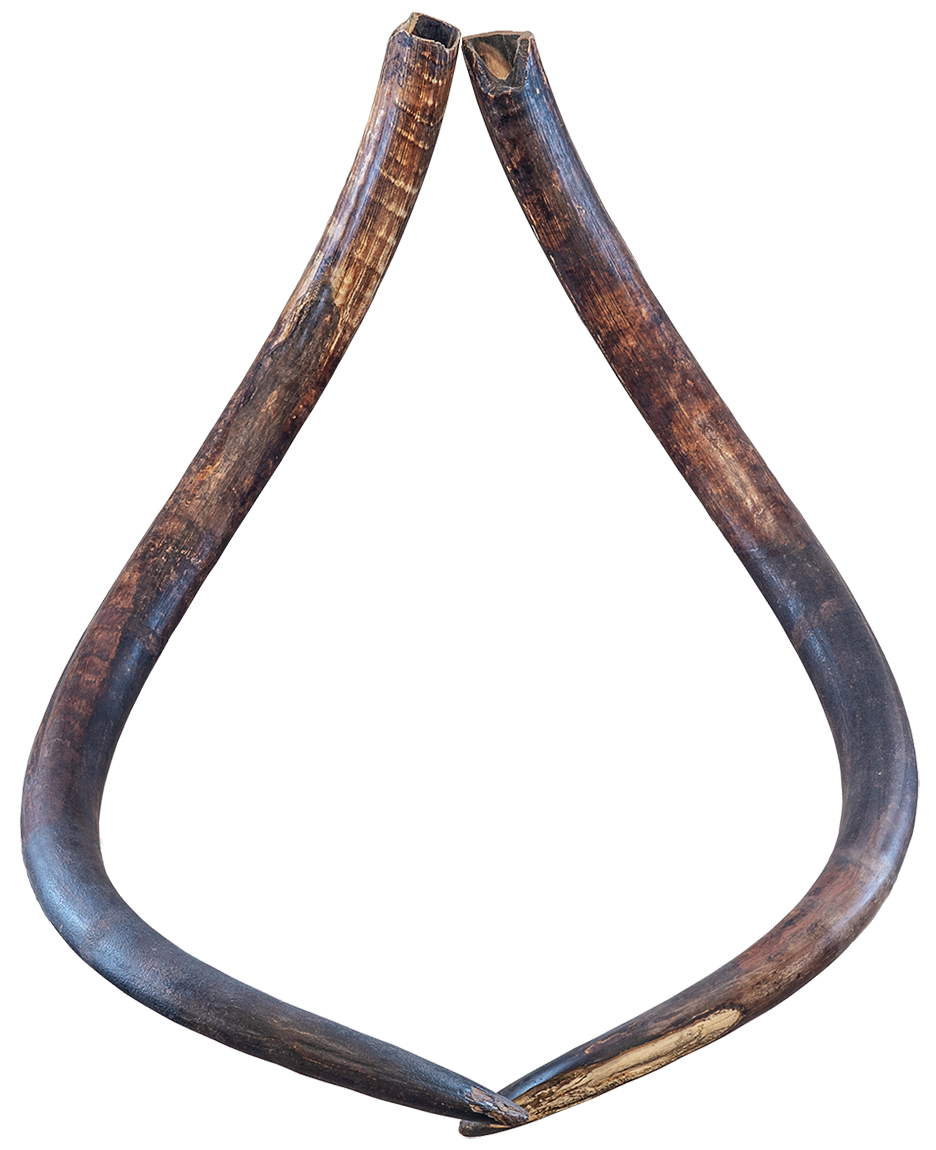Mammoth tusks

Tusks of a mammoth were bought in the end of the XIX century by a merchant from Irkutsk I. Gromov and donated to the museum. They were found in the permafrost layer on the bank of the Yenisei river. These tusks are from two different mammoths. Mammoths were large animals with long hair and thick layer of fat that helped them to adapt to the harsh conditions of the Ice Age. These animals lived in open areas. They inhabited wide grasslands with bushes and field woodland, but avoided forests. Mammoth, as well as modern elephants, needed about a centner of grass and twigs to eat every day. During the long winter period they used their massive tusks to gain food under the snow. Due to that fact dental enamel of these tusks is harmed in the bottom – it is worn down and chipped in places. As chewing molars in the jaws scuffed, they changed several times in a lifetime of an animal. Tusks were permanent teeth and were growing throughout the lifetime of an animal.
Exhibits' purpose of use – a mammoth tusk was a valuable material for an ancient human to make various tools and ornaments. Complete tusks may have been used to build dwellings.
